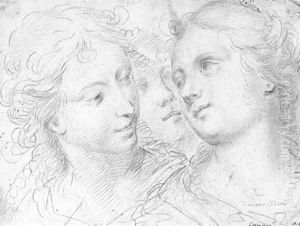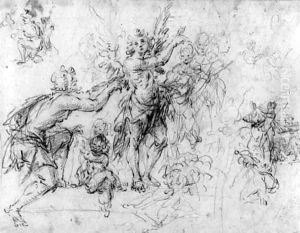Ercole Procaccini Il Giovane Paintings
Ercole Procaccini il Giovane, born in 1605 in Bologna, Italy, was a prominent figure in the Italian Baroque period, known for his painting and engraving works. He was part of the extensive Procaccini family of artists, which played a significant role in the development of the Lombard and Genoese schools of painting. His family, particularly his father, Camillo Procaccini, and his uncles, Giulio and Carlo Antonio Procaccini, were influential in his early artistic training, embedding in him the rich artistic traditions that characterized the family's legacy.
Despite the overshadowing fame of his relatives, Ercole Procaccini il Giovane managed to carve out his own niche in the Italian art scene. He moved to Genoa around the mid-17th century, where his style, characterized by a delicate approach to painting and a preference for religious and mythological themes, flourished. His work was representative of the transition from the late Renaissance to the Baroque period, showcasing a mastery of light and shadow, a keen attention to detail, and an emotional depth that resonated with the Baroque's dramatic tendencies.
Procaccini's contributions to art were not limited to painting; he was also an accomplished engraver, which allowed his works to reach a wider audience. His engravings, which often replicated his own paintings or those of other renowned artists of his time, were celebrated for their precision and beauty, further cementing his reputation in the art world.
Ercole Procaccini il Giovane's legacy, though somewhat overshadowed by the more famous members of his family, remains significant in the study of Italian Baroque art. His works are preserved in various museums and collections, serving as a testament to his skill and artistic vision. He passed away in 1675, leaving behind a body of work that continues to be appreciated for its contribution to the evolution of Italian art during a pivotal period in its history.

